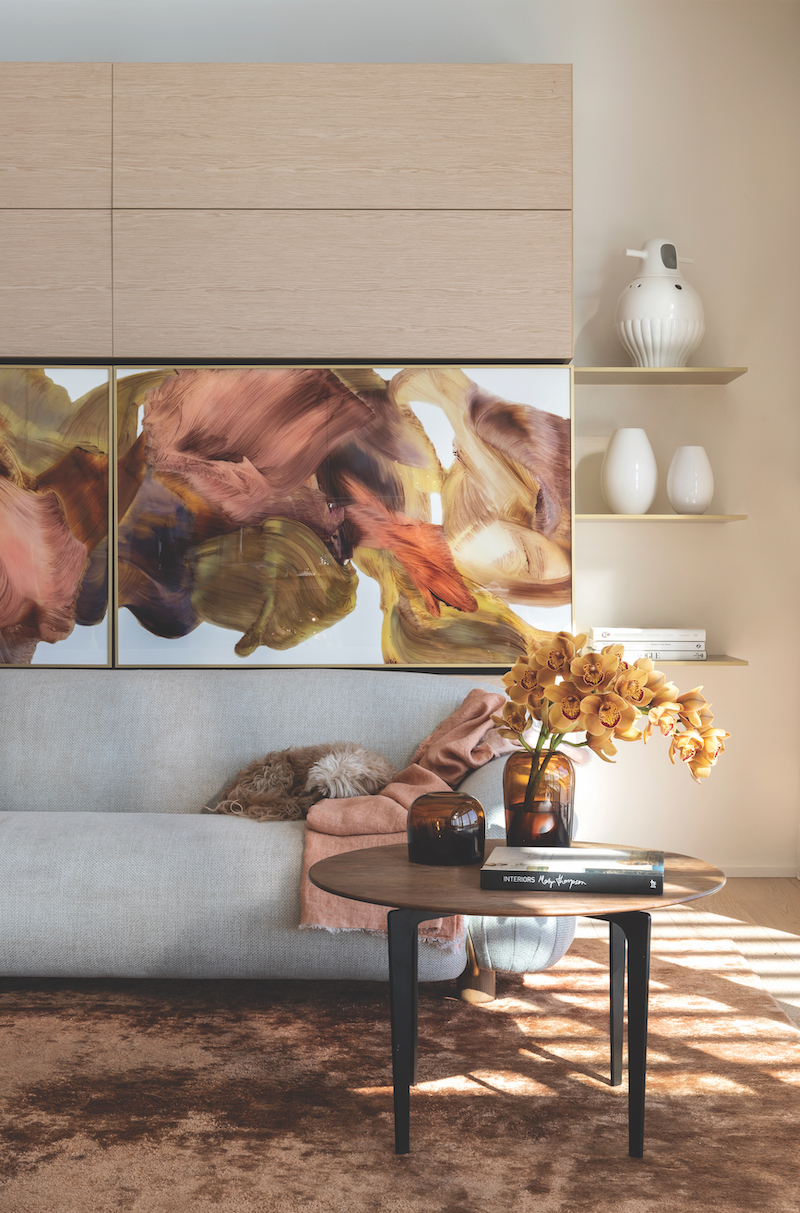When you think of sensory design, you might think of a sensual French boudoir with a four-poster bed and silk sheets, or a 1970s bachelor pad with velvet furniture and shag-pile rugs. But evoking the senses is actually the bread and butter of interior design – and architecture for that matter – especially if you think of sensory design as being about more than just touch. Design can delight the senses through moody lighting in a dark space, or in the way that sunlight kisses a wall or through the emotions evoked by an artwork.
For the interiors of Alexander, a new luxury apartment block in Sydney’s Barangaroo, Smart Design Studio was inspired by the streamlined curves of classic timber yachts. For one particular penthouse, the design team added to this with a number of differently textured fabrics and finishes. Velvet chairs in aubergine and a silk rug in ginger in the living room contrast with a marble table and leather chairs, with sheer linen curtains bringing an added dimension.
In the bedrooms, walnut veneer contrasts with heavy velvet curtains and brass skirting and trims – all tactile elements in the space. “We introduced layers of velvet, silk, leather and marble,” says William Smart from Smart Design Studio. A large artwork of expressive brushstrokes in pink and rusty colours by Camille Hannah was commissioned for the doors of the living room cupboards, transforming them into art pieces. “We wanted to create an atmosphere in that space and to make it very tactile,” Smart says.
Smart believes that sensory design plays an important role. “Every little element from sight to sound and smell will help to build the space,” he says. “What’s the sound of the tree? What’s the smell of the tree in the garden? How will it change with the seasons?”
For interior designer Simone Haag, sensory design is about creating homes that make the owner feel good. “Our rooms are always designed to not only appeal visually, but for the space to have great textures and create a deeper emotional connection for the client that tells their story.”
With Art House, Haag and her team have created a home with a carefully curated selection of furniture, objects and art. In the rumpus or playroom, the design was inspired by a room where the client spent her childhood summers. “We re-imagined the experience with whimsical pieces,” says Haag. These include two Arflex Botolo chairs in the rumpus room that have seats and backs lined with pink fur, a custom Penny rug by Whitecliffe and a disquieting painting with a clothed skeleton standing in a scorched purple and grey landscape called After the Deluge by Michael Vale. “We wanted to hero their pieces with other layered and tactile elements and create versatile rooms that were unique and meaningful to them.”
The interiors also feature a variety of interesting pieces in stone, many of which are rough-hewn, including a Christopher Boots Petra II pendant light above the kitchen and custom 2100 Smokey Quartz wall light in the living room. “These raw cut pieces of stone highlight the beauty of our natural geology,” says Haag. “During the day this acts as an art installation, however the piece comes alive at night when it’s turned on and sheds a magical light around the room.”
In another of Haag’s projects, The Whiskey Room, texture and mood were key drivers of the design. “Taking cues from the colour palette defined by the client,” she says, “we assembled a series of statement pieces that created unexpected moments, like the oversized Sammode Studio lamp and Dedar wallpapered ceiling. Despite working with an earthy palette, we succeeded in creating a richly textured series of spaces that are sophisticated yet accessible.” The result is a house full of art and interesting textures everywhere you look (and feel).
If lockdown taught us anything, it’s that we must invest in our homes to be truly happy. Perhaps thinking about designing homes from the point of view of all five senses might be the key to unlocking that joy.

